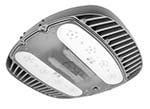Lighting quality is the overarching framework to address safety, health, and optimized operations.
Industrial Lighting Designs should combine these key factors.
- Establish a relationship between lighting quality and safety in industrial lighting environments.
- Evaluate different lighting technologies and their impact on operators.
- Highlight the effects of lighting installations on occupational safety.
Visual acuity is a major concern for employees in the oil and gas industry. They often perform tasks in hazardous environments.
Workers face fatigue during night-time operations due to poor perception of lighting. These visual challenges are common inside industrial facilities.
While quality lighting is vital for all age groups, workers over 50 are most sensitive to poor illumination. Significant challenges include excessive shadowing, major light level contrast and inaccurate colour appearance. In addition, exposure to cool white light during the night shift reduces sleep quality for workers, highlighting the impact of light on circadian rhythms and well-being.

Employees often show preference for pure white light and control over illumination. Studies show that improving light quality can enhance job performance.
Industrial facilities can benefit from lighting upgrades using optimized fixtures.
Industrial grade LED luminaires can improve safety and add to employee comfort. User surveys are critical before and after lighting upgrades. They measure productivity and visual performance in order to validate the positive outcomes.
LED technology advantages go beyond energy efficiency and reliability.
Precise control over the intensity and colour quality can enhance safety, increase productivity, and improve the work environment. To maximize benefits for facilities, planners and managers should take an application-centric design approach.
Nemalux can create a brighter, safer, and more productive industrial work environment.


